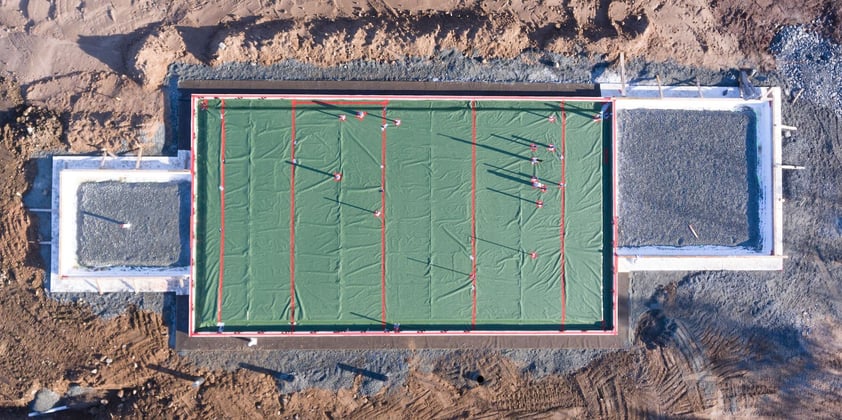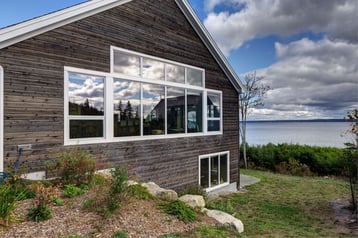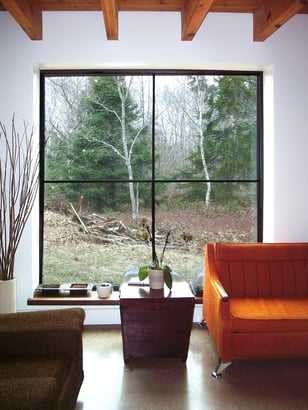
How to Choose the Best Fit
Every foundation has the same job to do---prevent a house from moving. But there are several different approaches to creating this stability. As you prepare for your next build, consider your site, lifestyle and long-term goals before choosing your foundation.
- Is your lot sloped?
- What type of soil and drainage do you have?
- Is flooding a risk in your area?
- Do you need extra living space?
- Is accessibility important to you?
- Do you want to preserve nearby trees or other natural features?
Exploring these questions in advance will help you choose the best foundation for your home and avoid unnecessary costs.
Rethinking the Basement
Do you need one?
Cross-Canada Basement Survey
- Mahone Bay, NS: rocky, clay-based soil, prone to flooding and dampness. This basement will be hard to keep dry, and you might have to break rock to get down far enough to build it.
- Toronto, ON: regardless of soil conditions, this basement makes financial sense. It optimizes the square-footage in an area where land is exceptionally costly.
- Brandon, MB: cold winters and deep frost depth rule out many slab-on-grade foundation options, meaning you probably need to dig. Time to consider the added cost of conditioning this space.
- Nelson, BC: sloped sites come with greater risk of sliding, which may rule out slab options. A walk-out basement makes good use of steeper slopes and can convert easily into a self-contained suite.
Unfinished or finished, basements are subject to the same cost considerations as the rest of the house.
Types of Foundations
For homes with no basement
- Slab-on-grade with frost wall: This foundation requires digging down below the frost line and pouring concrete footings and foundation walls. The difference is, rather than pouring the slab floor at the bottom of the frost wall as you would for a basement, you fill the cavity with rock and pour the slab at the top. No engineering required, but high volumes of concrete and fill have a big carbon impact. Also, excavation makes a mess of the site and can mean losing trees you might otherwise want to keep.
- Structural slab: Also known as "engineered slab-on-grade," "raft slab" and "floating slab," this style of foundation is constructed of steel-reinforced concrete and foam insulation, and sits on top of the ground. This design is best suited for relatively flat sites and smaller buildings. Structural slabs (in Canada) do require engineer approval, but aside from scraping off the top soil, there is little excavation required, making these slabs relatively quick and easy to install. They create less site disturbance, use less concrete, and are overall a more environmentally-friendly option than a frost-wall slab.
|
BONUS: A slab at grade can be polished to become your finished floor and eliminate the need for hardwood, ceramic or other flooring finishes. Polished concrete is durable and adds a touch of modern elegance to interior design. In a Passive house a polished slab also serves as a thermal battery. |
|
|
- Pile foundation with framed floor: If you're looking to minimize site disturbance and carbon impact even further, the pile foundation uses a grid of piles to support a wood-framed floor system. Zero concrete, zero foam, no digging or soil disruption, this light touch foundation works in a wide-variety of conditions, including sloped, rocky and flood-prone sites. Pile foundations also accommodate prefabricated houses. The disadvantages stem from the air space between the floor and the ground. Critters and moisture can gather, and stairs or a ramp are required to access the first level. This under-floor air space decreases thermal performance and can cause issues for plumbing connections.
- Pressure-treated wood: This foundation sits on a frost-depth concrete footer and is a variation on the traditional dugout foundation. The key difference is that instead of formed concrete or vertical ICF walls, it uses pressure-treated wood (a low global warming material). A good choice for DIY home-builders, this foundation works with basement or crawlspace designs. The trade-off here is longevity, since pressure-treated wood will decompose sooner than concrete or steel.
The 'High-Performance' Foundation
When choosing a foundation for a Passive House project, energy performance is a guiding metric. Here are the key features of a high-performance foundation:
- Compact: The surface-area-to-volume ratio determines a home's energy efficiency. The more compact the heated space, the less energy required.
- Minimal outside corners: Complicated shapes increase the surface-area-to-volume ratio and pose problems for air sealing.
- Super-insulated: Extra insulation under the slab helps to keep interior heat from seeping into the cool ground.
- No thermal bridging: While most slab foundations are governed by thermal bridging requirements, the high-performance foundation takes special care to eliminate all potential bridges for heat-loss.
- Air and radon sealed: The high-performance foundation uses thicker vapour barrier to lessen the risk of punctures and is meticulously sealed against air and radon gas.
Any type of foundation can be constructed to a high-performance standard, however these benchmarks are often easiest to attain with a structural slab. With less conditioned space than the basement alternative, less concrete and steel than the frost wall alternative, and age-in-place potential, structural slabs are often a good fit for sustainable, net zero and passive homes.
FASTslab Foundation Systems
Our contribution to foundation technology
There are distinct advantages to using a structural slab in Passive House construction. Many of the homes we design are perfectly suited to this style of foundation, but the engineering and installation process can seem overly complex. We saw a need for an affordable, kit-style foundation system that would simplify the installation process for structural slab-on-grade foundations. So, we invented one!
|
|
The FASTslab foundation system is factory-shaped foam pieces that glue together to make the formwork for structural slab-on-grade foundations. Designed for the Canadian climate, FASTslab comes with an integrated frost apron and pieces for shaping the reinforced slab. It can be customized to provide insulation values ranging from National Energy Code (NECB) compliant to Passive House.
This system is ideal for accessory dwelling units, garages, panelized or prefabricated homes and insulated larger buildings (arenas, storage facilities), and is proving to be the best and cheapest option for small buildings less than 600 SF. Passive House designers appreciate FASTslab because it meets thermal and structural requirements for optimal performance, and integrates with most wall types. Across the board, FASTslab is marginally more energy efficient than frost walls for the same design, but the real advantage is efficiency of material, production energy and installation time.
So, if you're not interested in a basement or crawlspace and your site is relatively flat, we invite you to check out the website to learn more about this exciting new option for structural slab-on-grade foundations. Or, share the link with your builder to find out if FASTslab is the right solution for you.
|
Still looking for a builder? Browse our growing list of builder affiliates here. |




